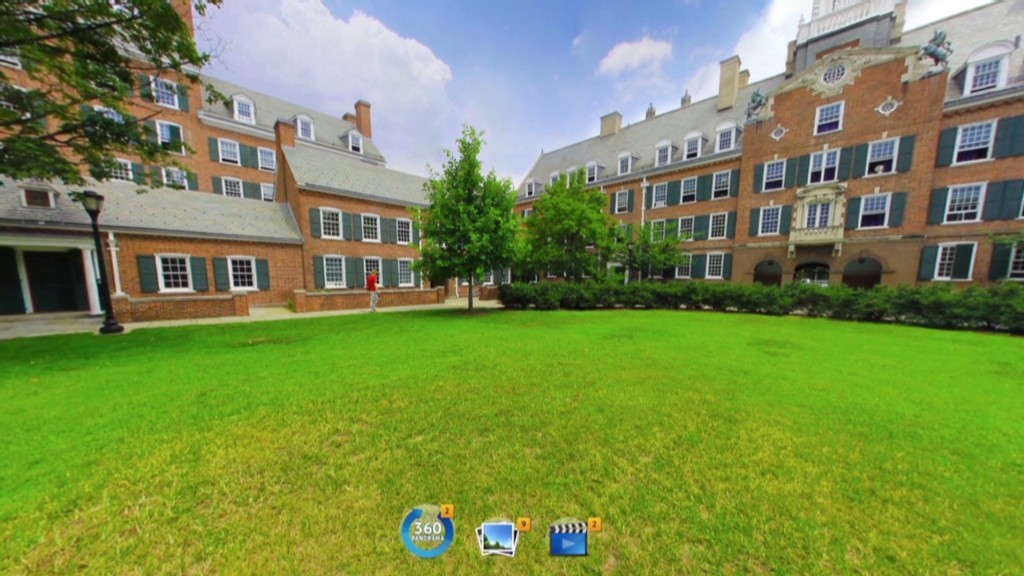
In a decade or two, going to the movie theater could feel as outdated as renting a VHS tape.
That's the future virtual reality enthusiasts from Oculus VR and elsewhere are sketching out, extolling the technology as a transformative new medium for visual storytelling.
"At some point, VR is going to eliminate the need to go to a physical place and see a big screen," Oculus CEO Brendan Iribe told CNNMoney. "It can be even richer than the IMAX experience in a theater, because it can be 360 and all around you."
Did you think virtual reality was just for video games? So did Oculus at first. The company, which was acquired by Facebook (FB) earlier this year for $2 billion, counts a number of people with video gaming backgrounds among its earliest employees. Most of them believed that's where the main applications of the technology would lie, Iribe said.
Related: How Mark Zuckerberg courts companies
"What we quickly realized was that stepping into this virtual world where you had bullets whizzing by you was very jarring, and for most people it was too jarring," he said. "What we did find was that real-time cinema experiences and video experiences turn out to be some of the most compelling, comfortable content."
All that content is still in the experimental phase, particularly since VR headsets haven't yet hit the mass market. Oculus, the most promising player in the field, doesn't even have a consumer product on store shelves yet.
But independent filmmakers have already produced a number of Oculus-ready short movies, which generally clock in at under 15 minutes. The challenge, directors say, is having to rethink storytelling for an interactive medium in which you can't control where the viewer looks.
"It's exciting because the rules haven't been written -- it feels very much like the days of early cinema," said Ikrima Elhassan, whose studio has shot a handful of VR projects.

Elhassan says that for VR filmmakers, "the entire production process has to be rethought." Among the challenges: How do you direct a viewer's attention? How do you do cuts that aren't too jarring? How do you move people through a virtual environment without making them sick?
There's also the question of when VR content will find a wide audience. Iribe says it will likely be five to seven years before Oculus produces a headset compact enough to prompt wide adoption.
"The jury is still out on whether traditional Hollywood production companies are going to be the ones to come in and produce the truly magical, original VR content the right way," Iribe said, adding that Oculus has met with a number of major studios to demonstrate the technology.
"They don't quite know what to think of it all -- they don't know when it will get to scale, when there will be 10, 20, 30 million people with VR headsets," he said.
Some big studios are experimenting with the technology, including Fox Searchlight, which is reportedly working on virtual reality experiences tied to "Night at the Museum" and the upcoming Reese Witherspoon film "Wild."
Related: $2 billion for Oculus? That's cheap!
For now, it's easier to create an immersive VR experience using computer-generated graphics than live action. That's because the computer-generated environment can be programmed to track a viewer's position and respond to movements. Imagine, for example, leaning into a scene while watching "Toy Story" and having Woody turn and make eye contact with you.
With live action, by contrast, scenes are created using footage from multiple cameras that gets stitched together to create a panoramic view. It's harder to make those scenes responsive to the viewer, but filmmakers say the experience of being immersed in the action is striking nonetheless.
"It gives you this really powerful and emotional experience of being present," Felix Lajeunesse of Felix and Paul Studios, which makes VR content.
"It's going to grow at exponential speed," he added. "It's just too interesting and extraordinary an experience for it to fail."

